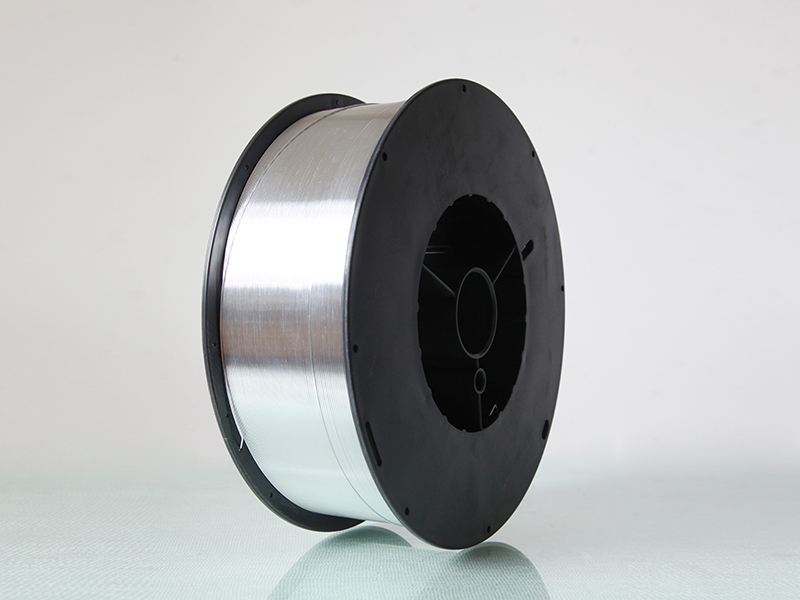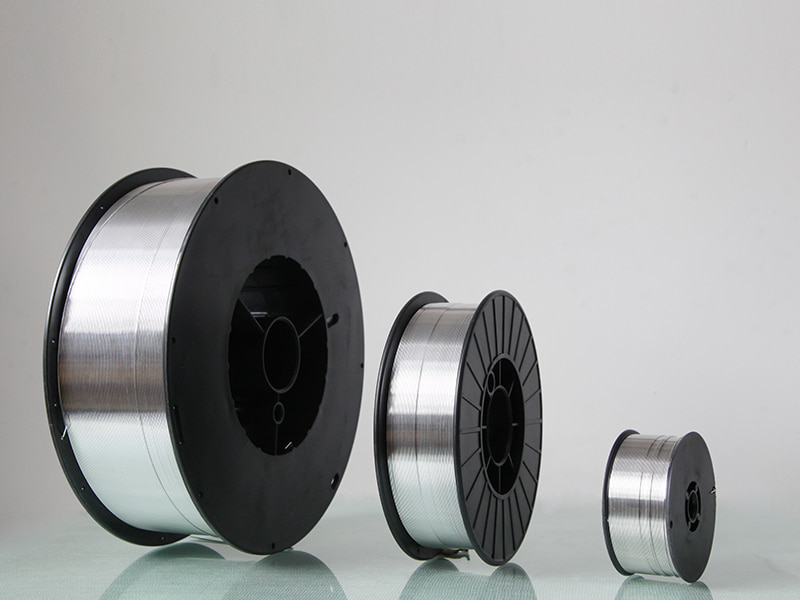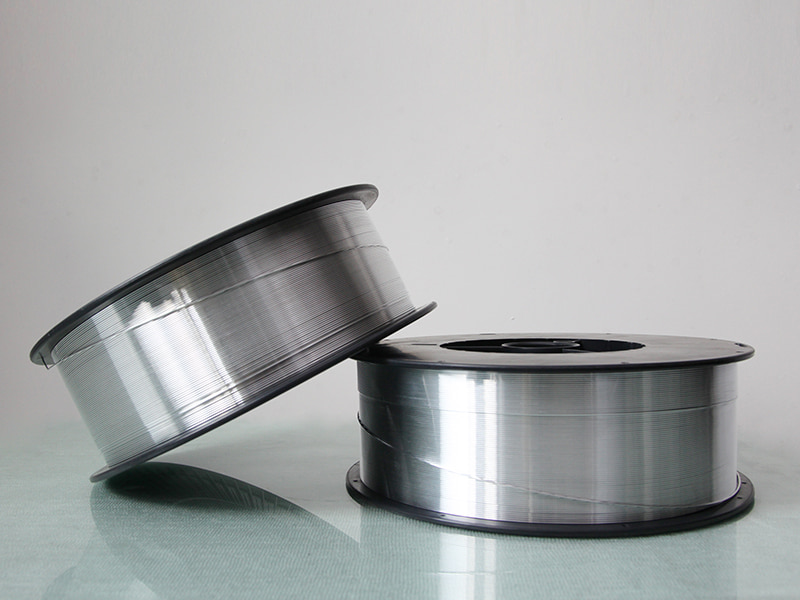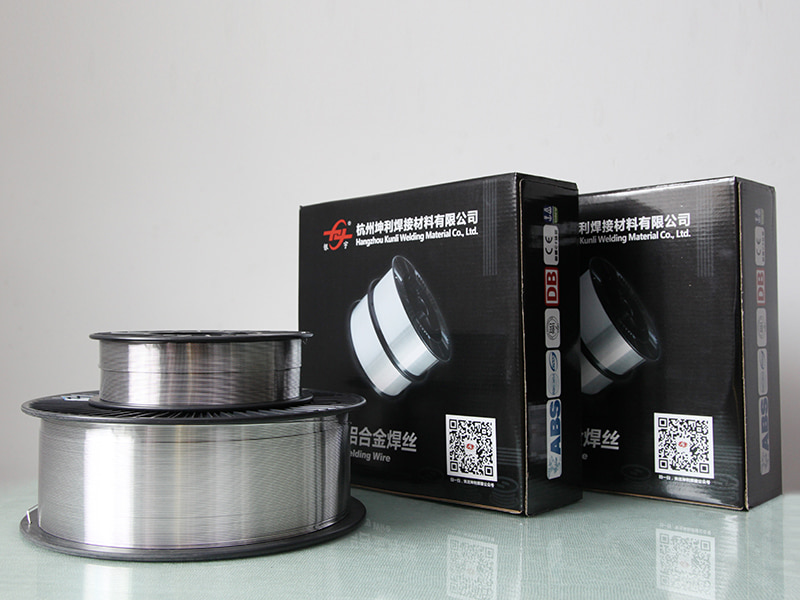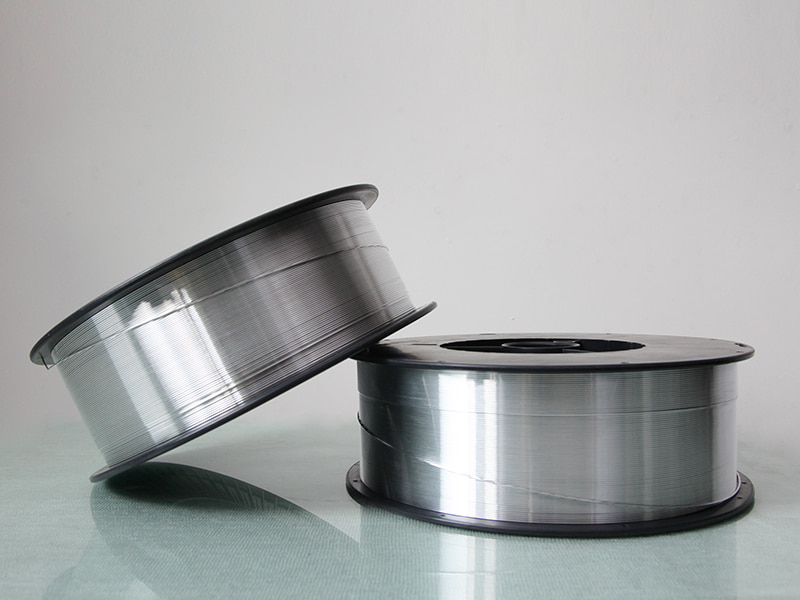Aluminum Welding Wire
ALUMINUM ALLOY WIRE FOR 3D PRINTING
Aluminum alloy wire for 3DP is for arc additive manufacturing (wire+arc additive manufacturing, WAAM). Comparing with Laser solid forming, WAAM can save the process of producing Al powder, avoid oxidation and the problem of lower deposition rate because of the higher flectivity while Laser is working on the surface of Al material. The Aluminum alloy wire for 3D printing is 2000 series, 5000 series, and 6000series, like suitable for the complicated construction in the area of air and spacecraft, energy, auto mobile etc.
Currently, we can produce 2195,2319, 114A and 205A.
Aluminum Alloy Wire For 3D Printing Product Features
Lightweight and high strength: Aluminum alloy materials have the characteristics of high strength and light weight, and are suitable for application scenarios that need to reduce weight but maintain strength.
Corrosion resistance: Aluminum alloys have good corrosion resistance and are suitable for the manufacture of parts in harsh environments.
High thermal conductivity: Aluminum alloys have high thermal conductivity and are suitable for parts that need to dissipate heat.
Post-processability: Aluminum alloy materials are easy to machine and weld, and are suitable for complex post-processing processes.
Wide range of applications: Aluminum alloys are suitable for a variety of 3D printing technologies, such as selective laser melting (SLM), directed energy deposition (DED) and binder jetting.
Product parameters
Main alloy components: Common aluminum alloys include AlSi10Mg, AlSi12, AlSi7Mg, etc. These alloys have different mechanical properties and chemical compositions.
Mechanical properties:
AlSi10Mg: has good comprehensive properties and is suitable for the manufacture of high-strength and high-toughness parts.
AlSi12: lightweight and has excellent thermal properties, suitable for the manufacture of thin-walled parts and complex geometries.
AlSi7Mg: Combines the strengthening effects of silicon and magnesium, suitable for applications with high strength requirements.
Printing parameters:
Printing speed: Adjusted according to the specific equipment and material characteristics, usually between 500-1000 mm/min.
Layer thickness: 0.1-0.5 mm, depending on the printing accuracy requirements.
Temperature range: The printing temperature needs to be adjusted according to the alloy type, usually between 600-800°C.
Application scenarios
Aerospace: Aluminum alloys are widely used in the manufacture of aircraft structural parts, engine components and spacecraft components due to their light weight and high strength.
Automotive industry: Used to manufacture automotive parts such as engine brackets, suspension systems and body structural parts to reduce weight and improve fuel efficiency.
Industrial machinery: Suitable for manufacturing parts of industrial machinery, such as gears, bearing seats and brackets, and are favored for their wear resistance and high strength.
Consumer electronics: Used to manufacture mobile phone cases, laptop cases, etc., and are popular for their light weight, high strength and aesthetics.
Medical devices: Suitable for manufacturing medical devices and implants due to its biocompatibility and good mechanical properties.
ALUMINUM ALLOY WIRE FOR 3D PRINTING
Coming From China,
Marketing To The World.
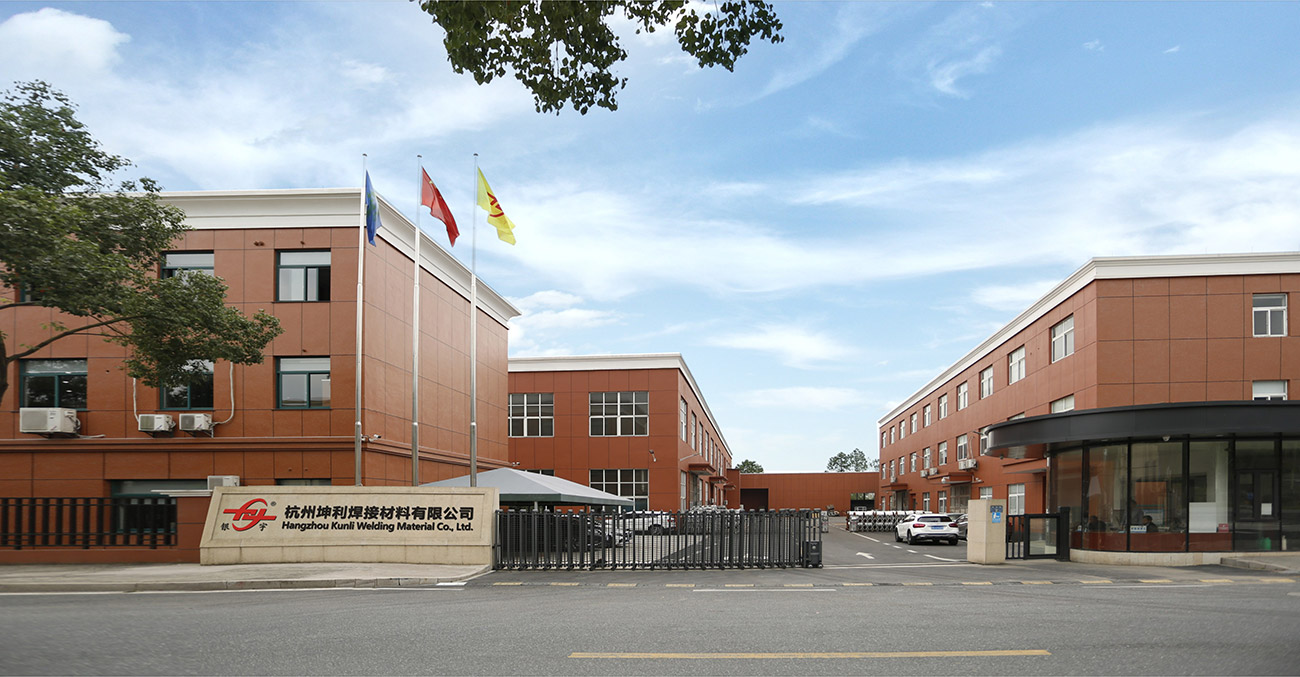
-

30+
USED IN HEAVY INDUSTRY TECHNOLOGY SECTOR
-

35
YEARS OF RESEARCH AND DEVELOPMENT EXPERIENCE
-

200+
COOPERATIVE LARGE-SCALE R & D INSTITUTIONS
-

20+
GLOBAL TRADE COUNTRIES AND REGIONS
Coming From China,
Marketing To The World.
More than 90% of our field operators have professional and technical education background, and have many years of experience in equipment processing and assembly. It is precisely because of this united, dedicated, pioneering, skilled and experienced team that the company's technology and products can be continuously updated and improved.
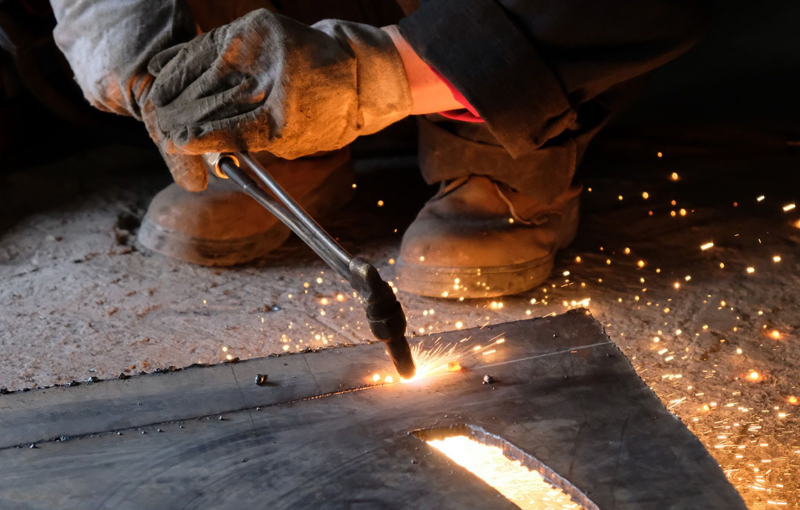
Send Us a Message?
Related Products
-
 View More
View More
5154 Aluminum Alloy Welding Wire
-
 View More
View More
ER4043 Silicon Aluminum Welding Wire
-
 View More
View More
ER4047 Aluminum Mig Welding Wire
-
 View More
View More
ER5154 Al-Mg Alloy Wire
-
 View More
View More
ER5087 Magnesium Aluminum Welding Wire
-
 View More
View More
Aluminum Welding Wire ER5183
-
 View More
View More
ER5356 Aluminum Welding Wire
-
 View More
View More
ER5554 Aluminum Welding Wire
-
 View More
View More
ER5556 Aluminum Welding Wire
-
 View More
View More
ER1100 Aluminum Welding Wire
-
 View More
View More
ER5754 Aluminum Welding Wire
-
 View More
View More
ER2319 Aluminum Welding Wire
::: Last News :::
-
Guide to Industrial Aluminum Welding Wire — The Basics
Dec 17, 2025
In welding tasks across fabrication, maintenance, and production sectors, the durability, cleanliness, and overall quali...
-
Why ER4943 Differs from Common Aluminum Fillers
Dec 15, 2025
Aluminum Welding Wire ER4943 stands as a workable filler material for diverse fabrication and repair duties, uniting wel...
-
What is Aluminum Braided Wire and Where is it Commonly ...
Dec 12, 2025
Aluminum Braided Wire Manufacturers are central to supplying flexible, lightweight conductors for a wide range of power ...
-
Can Aluminum Braided Wire Meet Your Design Needs?
Dec 08, 2025
Aluminum Braided Wire has transformed from a niche alternative into a common and standard component in modern electrical...
Industry Information Extension
More Information About ALUMINUM ALLOY WIRE FOR 3D PRINTING Suppliers
Real-Time Monitoring Systems for Aluminum Wire 3D Printing: Reducing Defects in Metal AM Processes
The growing adoption of aluminum alloy wire for 3D printing in industries like aerospace, automotive, and energy has driven demand for higher precision and defect-free manufacturing. One of the most promising advancements in this field is the integration of real-time monitoring systems for wire arc additive manufacturing (WAAM), ensuring consistent quality in aluminum wire-fed 3D printing processes.
Why Real-Time Monitoring Matters in Aluminum Wire 3D Printing?
Unlike traditional powder-based metal 3D printing, aluminum wire 3D printing relies on continuous wire deposition, making it prone to defects like porosity, lack of fusion, and inconsistent bead geometry. Real-time monitoring systems address these challenges by:
Tracking arc stability in aluminum WAAM processes to prevent spatter and uneven deposition.
Monitoring melt pool dynamics to optimize heat input and reduce cracking in high-strength aluminum alloys like ER4043 and ER5356.
Detecting geometric deviations using laser scanners or vision-based systems, ensuring dimensional accuracy in large-scale aluminum wire AM.
Key Technologies in Real-Time Monitoring for Aluminum Wire AM
Optical Emission Spectroscopy (OES) – Measures plasma emissions during welding to detect impurities in aluminum alloy wire for additive manufacturing.
Infrared Thermography – Tracks temperature distribution to prevent overheating in thin-wall aluminum wire 3D printing.
High-Speed Cameras + AI Analysis – Identifies defects like porosity in real-time, crucial for aerospace-grade aluminum wire deposition.
Performance Comparison: ER4043 vs. ER5356 in Monitored WAAM
| Parameter | ER4043 (Al-Si Alloy) | ER5356 (Al-Mg Alloy) |
|---|---|---|
| Crack Resistance | High (Good for high-heat apps) | Moderate (Prone to hot cracking) |
| Wire Feed Speed | 6-8 m/min (Optimal) | 5-7 m/min (Stable) |
| Porosity Risk | Low (Si reduces voids) | Moderate (Mg increases gas absorption) |
| Post-Processing Ease | Excellent (Smooth finish) | Good (May require more machining) |
| Typical Applications | Heat exchangers, automotive parts | Marine components, structural welds |
 English
English Deutsch
Deutsch
 English
English Deutsch
Deutsch
